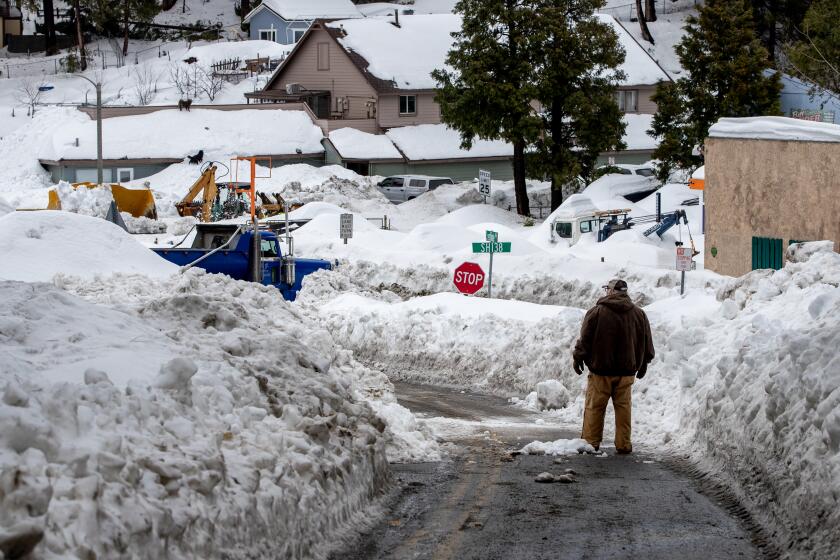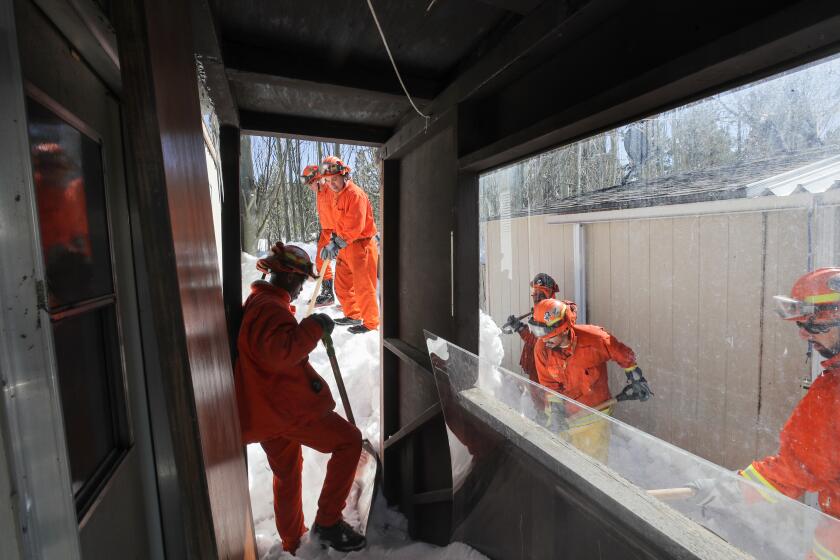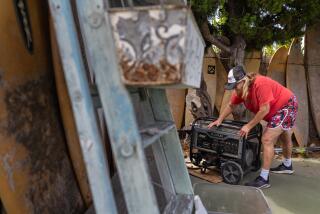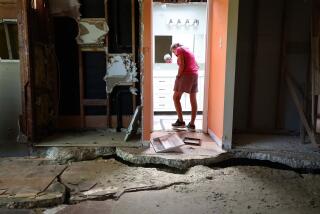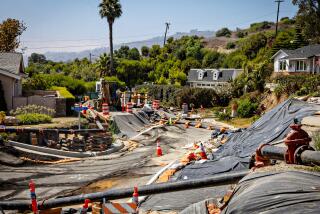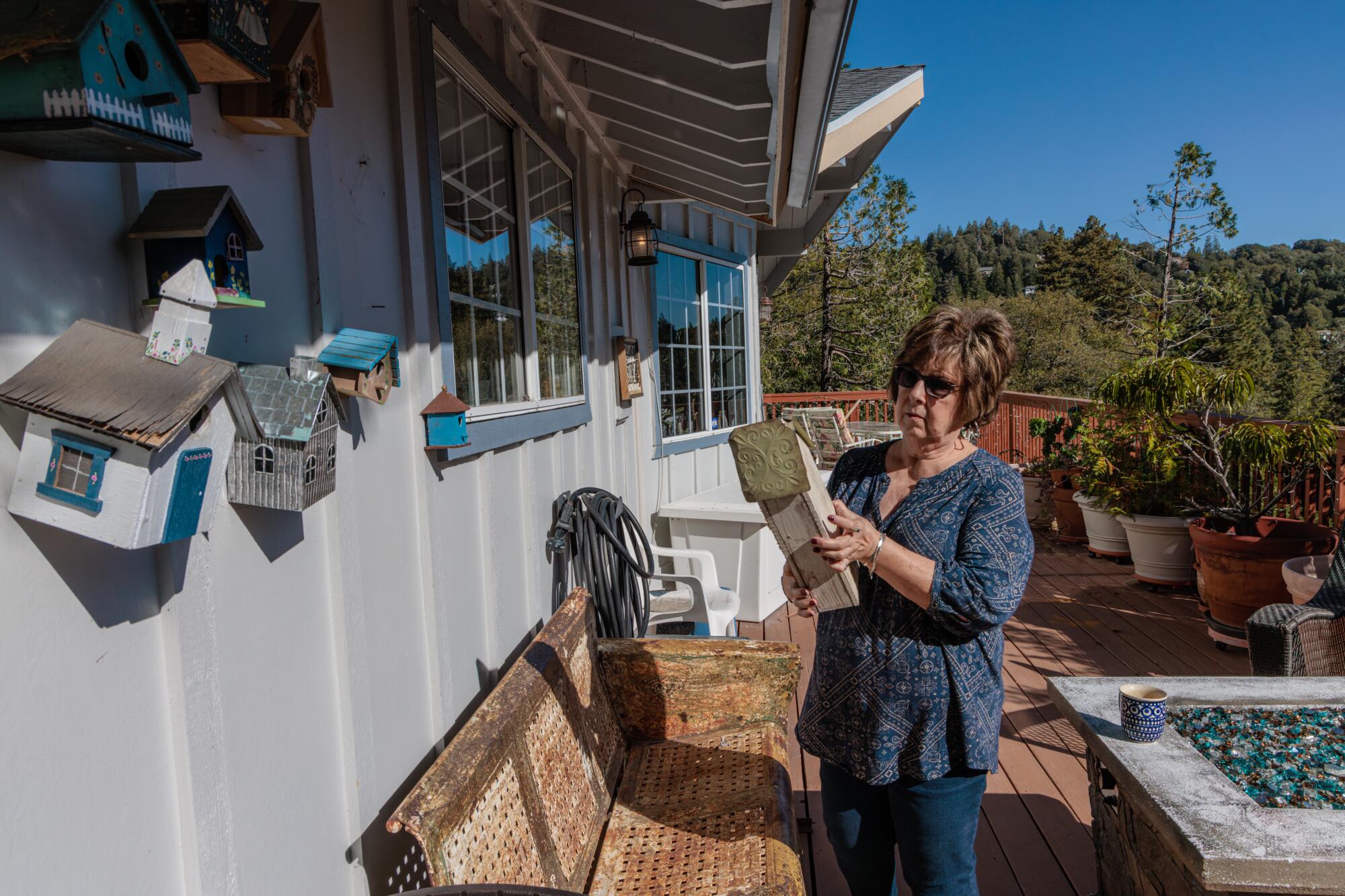
- Share via
As the snow piled up in late February, Teri Ostlie did her best to continue shoveling.
The 71-year-old tried to keep her deck clear and maintain a route to the road — what she started to call a “gurney path” — as she worried about keeping up with the task of heaving shovelfuls of snow over shoulder-high banks.
She held strong. But her Crestline home did not.
Under the weight of almost 10 feet of snow from back-to-back, unprecedented winter storms, her walls started buckling, pulling off beams and granite countertops. Cracks grew across her ceiling, the house creaking loudly as it fractured.
San Bernardino Mountain residents are used to snow, but the magnitude of those late-season storms was unlike anything the region has seen in recent history.
Eight months later, recovery is ongoing. And worry is spreading that a predicted strong El Niño winter may bring more punishment, along with anxiety about how the local infrastructure can hold up against climate whiplash and whether officials can fix the errors that left so many vulnerable.
For weeks last winter, many San Bernardino Mountains residents remained trapped in their homes, buried under as much as 12 feet of snow, some without power for as long as six days. Almost 350 residences and businesses were damaged or destroyed — including one of the area’s largest grocery stores, whose roof collapsed, and several houses that exploded because of buried gas meters. An estimated $143 million in losses to private property was tallied.
When the roads finally cleared, more than a dozen people had died, many found in their homes.
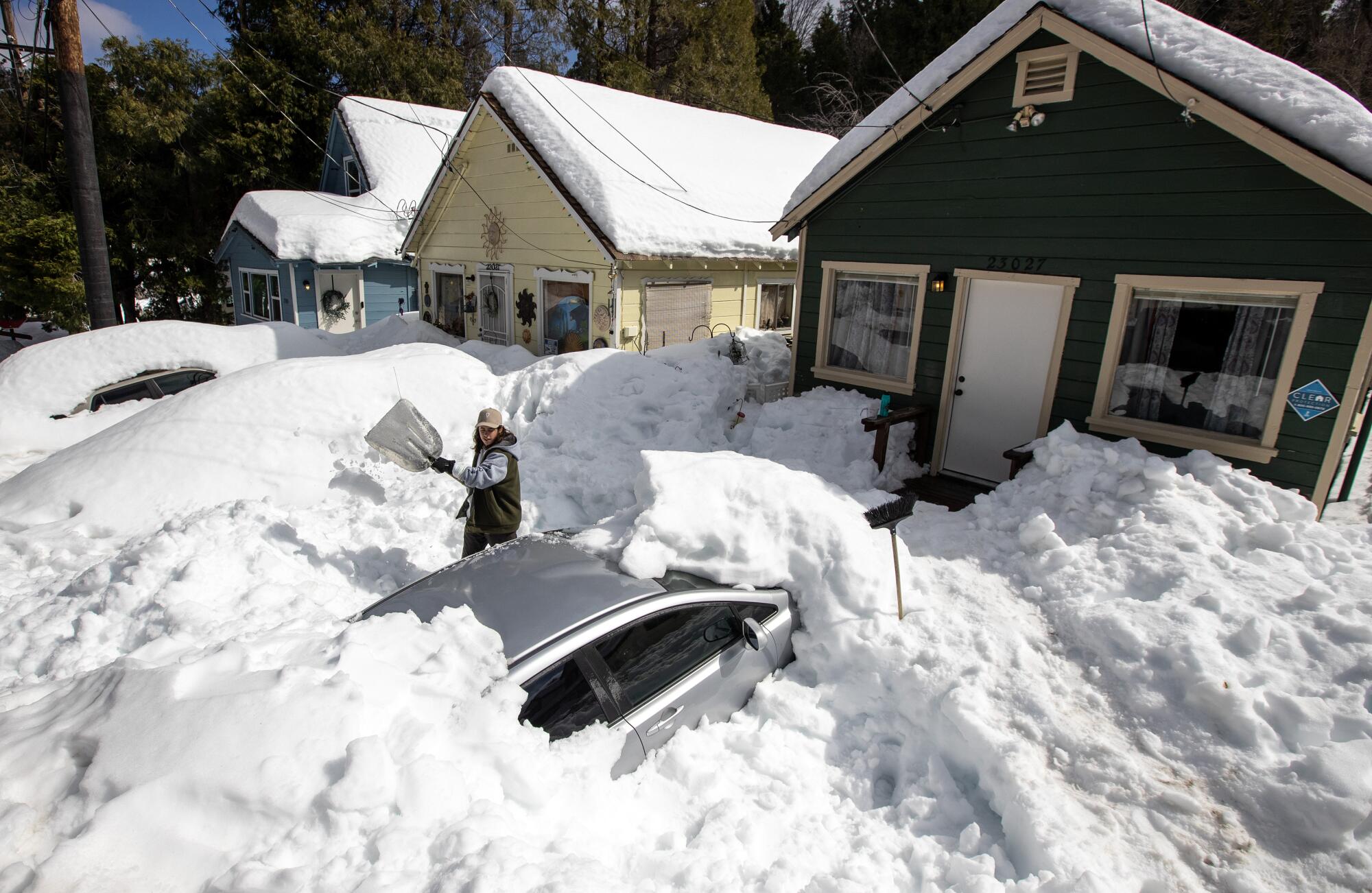
“I know I have PTSD for snow,” Ostlie said, a sentiment echoed by many neighbors. A few weeks after the blizzard left her home red-tagged, a minor snowfall in early May triggered a daylong panic attack, she said.
“It was awful. I couldn’t trust that I was safe.”
Crews struggle to clear roads in the San Bernardino Mountains as frustration grows among stranded residents.
A review of hundreds of emails from San Bernardino County and state officials, as well as interviews with local leaders and residents, found that much of the emergency response was slow and disjointed — affecting the availability of snow-clearing equipment and food as well as hospital access.
Officials have acknowledged gaps in their response. But as forecasts show this winter could again bring heavy snows, they say they are better prepared.
“We have the lessons learned,” said San Bernardino County Supervisor Dawn Rowe, who represents most of the mountain communities. “You can’t be perfect on your first time experiencing the first of anything, but we’ve done a good job of trying to quantify the areas where we fell short … and making sure we have backstops in place.”
One main downfall of last winter’s response, officials said, stemmed from inexperienced and decentralized leadership in the county Office of Emergency Services, which takes charge during crises. Historically, first responders — typically the San Bernardino County Fire Protection District — lead emergency responses, but that process shifted to county administrators during the COVID-19 pandemic.
“There was no one spot to go for information, and that one aspect of the storm response created additional problems,” Rowe said.
Many residents turned to social media or volunteer groups for help or the most up-to-date information.
A few days into the response efforts, the sheriff’s and fire departments established their own incident management team, while working in conjunction with county administrators. They cited the need for “a more localized operational approach,” according to the sheriff’s after-action report. At the same time, trapped residents and their families were reaching out to state officials for help, requests that were relayed back to the county, emails show.
Rowe said she would like the county to have one website for all emergency updates, and have the Office of Emergency Services return to the purview of first responders — the latter also a recommendation from the Sheriff’s Department.
During the storms, it also took time for the county’s emergency operations to get running. It wasn’t until March 2 — six days after the National Weather Service issued its first-ever blizzard warning for the region — that the county’s OES began holding daily briefings to coordinate responses with different agencies, records show.
People in the Southern California mountains have been trapped in their homes for days by heavy snow after a series of winter storms.
County spokesperson David Wert declined to comment on much of the emergency response, citing an ongoing external review expected to be published in December. However, he said the county had met with various agencies before the storms to coordinate efforts.
An internal review by the Sheriff’s Department noted how the county’s OES did not manage volunteers, so deputies and firefighters “had to step in.”
“It took almost 24 hours to coordinate and establish effective communications between the various volunteer groups,” the report said. “This caused frustration within the volunteer groups and initial ineffective management of the groups.”
In Wrightwood — where residents saw historic snowfall but didn’t face as many issues as their eastern neighbors — Tamie Keen said she repeatedly tried to get updates and resources as manager of the Wrightwood Community Services District. On March 1, days after the storms began, Keen’s team wrote to county officials expressing worry that the town wasn’t even mentioned in the latest update.
“Is there a plan in place for our community as well?” the community services district asked in an email to San Bernardino County Supervisor Paul Cook, records show.
“It was a lot of miscommunication and just unorganized,” Keen said recently. Although Wrightwood eventually got supplies and support, she said, “it was just a little late.”
“We need the help when it’s happening and not after, when we can get up and down the mountain,” Keen said.
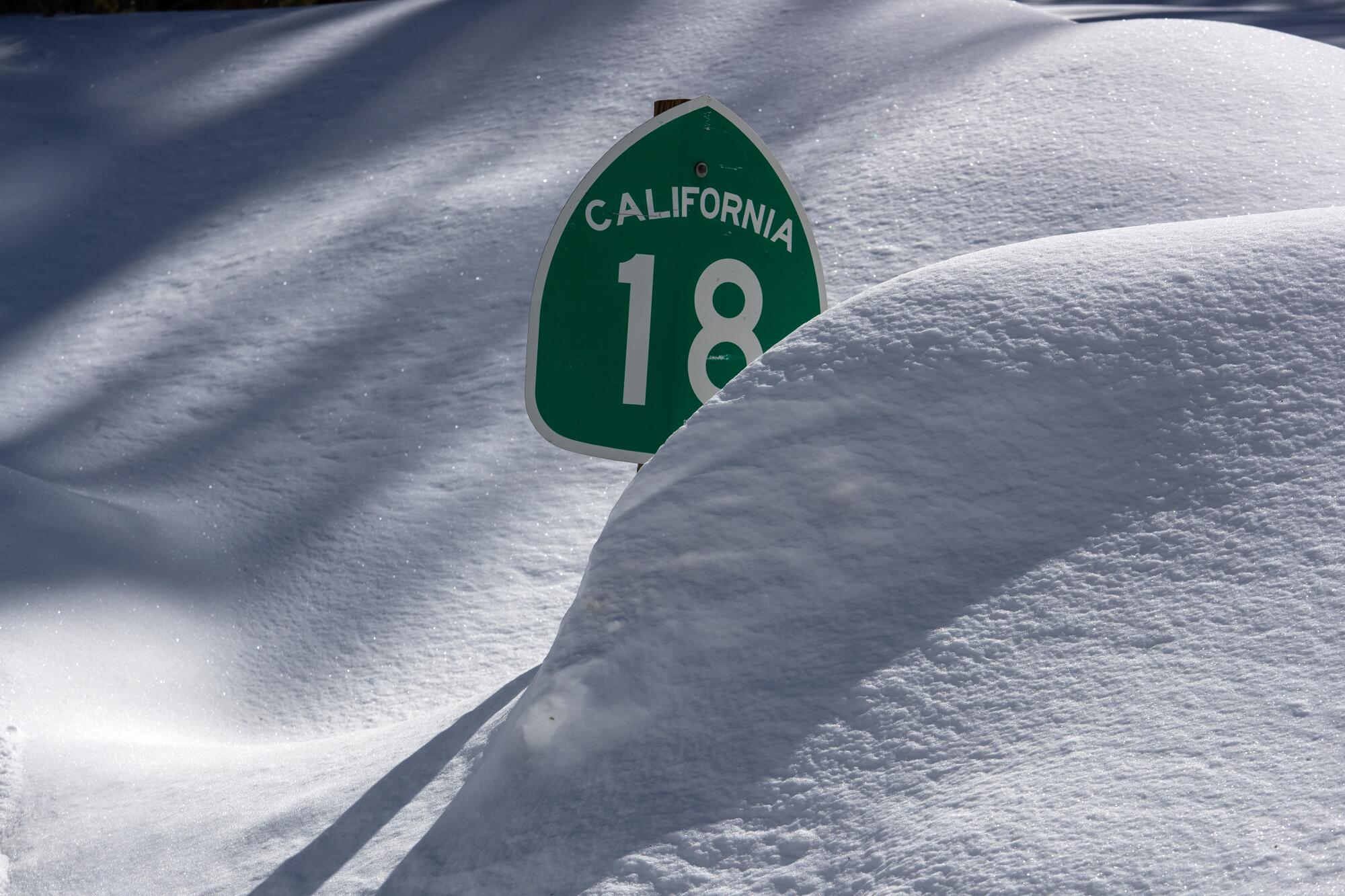
The other major issue was the mountain roadways, many of which took more than two weeks to reopen — and that didn’t include clearing hundreds of private roads.
Rowe said two key challenges inhibited plowing.
First, she said, the area’s major utilities — Southern California Edison and Southern California Gas Co. — didn’t have their own plows and had to ask the county to help them access outages, a request that county officials made a priority but that diverted key equipment from clearing operations.
Dave Eisenhauer, a spokesperson for SoCal Edison, said the utility has snow vehicles but noted it’s typical to partner with county or California Department of Transportation officials to access locations for repairs. SoCalGas did not respond to requests for comment.
The second issue, Rowe said, was the weather itself, which quickly required different snow-clearing equipment than the county had — a challenge exacerbated by the diversion of plows to the utility companies.
“This is really the first time that the county has experienced an operation that went so rapidly from a plowing operation to what they call a ‘scoop and dump,’ ” Rowe said. Plows were overwhelmed by the depth and weight of the snow, rendering typical equipment ineffective, she said.
The county then had to play catch-up, working to get front-end loaders and dump trucks up the mountain as well as secure specialty drivers, Rowe said. By the time officials realized how bad the storms were, it was too late to get outside help.
Mountain residents criticized Caltrans, which handles the plowing of state roads, saying that the agency — as well as the California Highway Patrol — opened and closed roads abruptly and left some people stranded in their cars as mounds of snow were cleared.
Ahead of the storms, Caltrans pulled resources from nearby districts to the San Bernardino Mountains to take “a very proactive approach” to the blizzard warning, the agency said in a statement.
Caltrans also used private contractors to help with snow removal, according to the statement. The agency is currently working to finalize a new snow plan for the upcoming season that will allow for quicker turnarounds on closed roads.
Rowe and Wert said the county has now purchased its own plowing equipment specifically for the mountain communities.
“However, snowfall of the magnitude we experienced in February and March will always result in many residents being unable to leave their homes and property for some period of time, no matter how well-equipped the county is and how quickly the county acts,” Wert said.
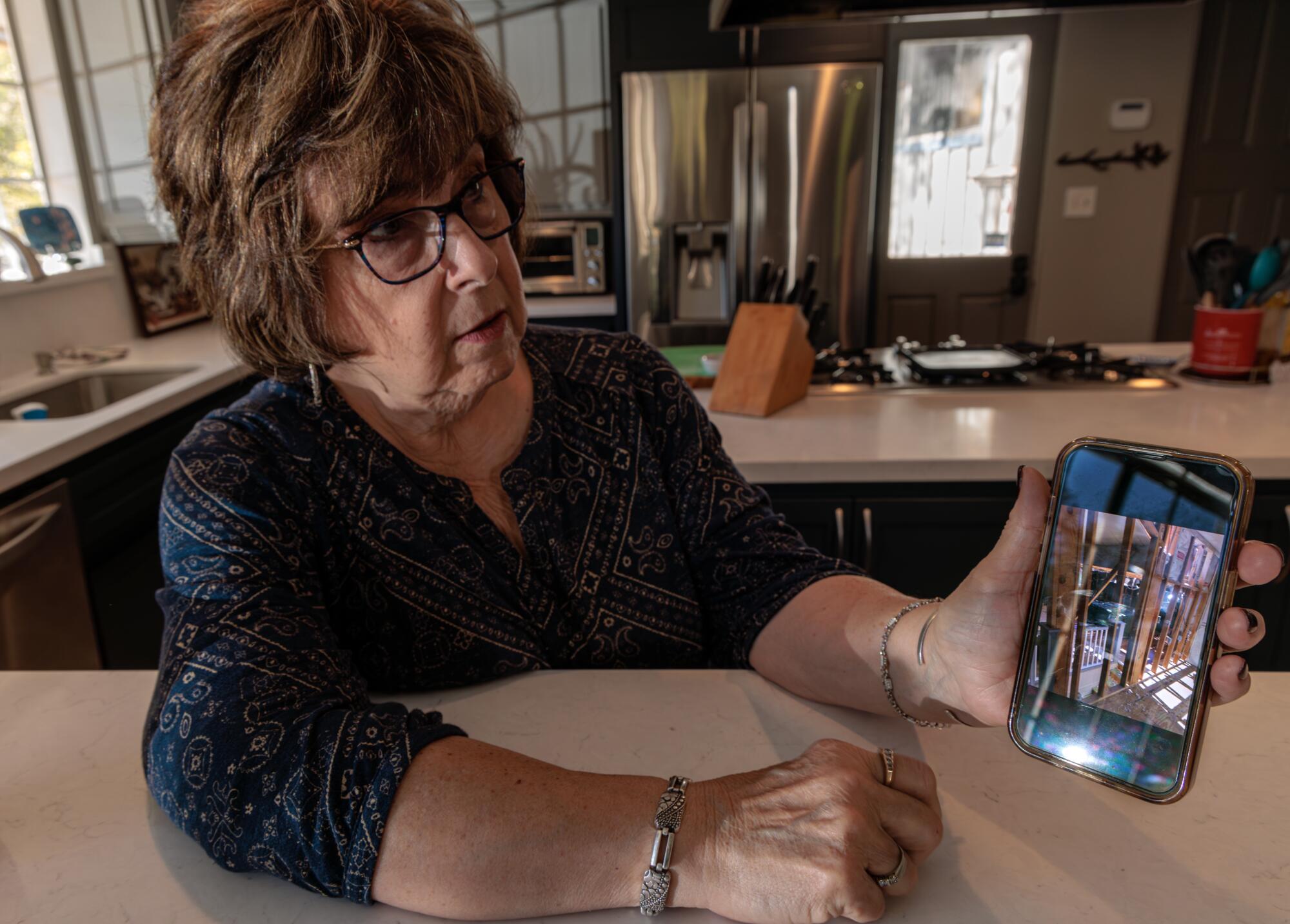
The latest forecasts show a growing likelihood of significant snow this winter. The National Weather Service’s Climate Prediction Center expects slightly above-average precipitation across Southern California and effects from a lingering El Niño, which typically indicates wetter weather. The Farmer’s Almanac also predicts “above-normal mountain snow” for the southwest U.S.
In light of that, many residents are on edge.
“Your house is your safe place — you close the door and you’re safe. But that wasn’t the case,” Ostlie said.
Her roof never fully collapsed, but it required massive repairs. Her insurer declined her claim, and a Small Business Administration loan covered only about half the necessary repairs. Ostlie ended up draining much of her retirement savings to finish the work.
The retired teacher knows she’s among the lucky few who were able to expedite rebuilding. Of the hundreds of homeowners who incurred structural damage, many are still waiting on loans or permits to be approved, contractors to become available or insurance battles to be resolved.
Goodwin’s market, a mainstay for mountain dwellers that collapsed during the storms, remains under construction, with the most optimistic completion date not until early summer. The county’s Board of Supervisors waived plan review and permit fees for property owners repairing damage from the winter storms, Wert said, but it wasn’t immediately clear how many had taken advantage of that.
The SBA and Federal Emergency Management Agency have offered loans, but many residents said they were not approved — or if they were, the amount didn’t cover all the damage.
“Once you fall off the news cycle, everybody thinks everything is great,” Ostlie said. “I know of people who are still waiting to get funded by SBA so they can begin [repairs], and winter’s coming soon. ... I don’t know what those people are going to do.”
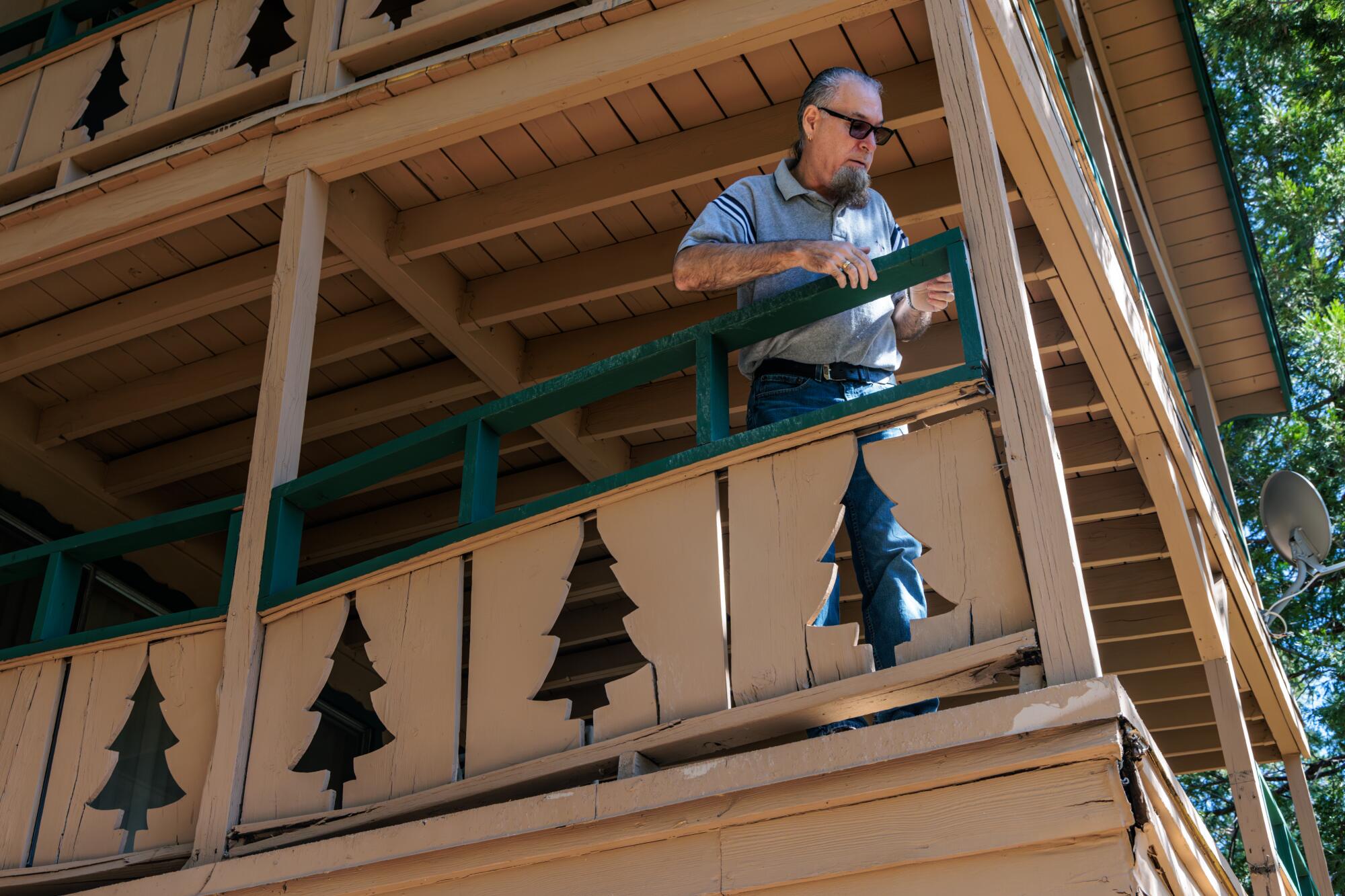
Some remain in unsafe homes, financially constrained but hoping for the best.
“If the support beams collapse, it’s going to pancake,” said Jeffrey Walker, looking at his two-story wooden deck in Crestline. “It’s very concerning to me that I can’t do anything at this point. ... What do I do? How do I save the deck and possibly the front of my house?”
He’s worried the cracked and now-leaning deck, which sits up the hill from his street and other homes, could give way at any moment — especially under the weight of more snow.
For the record:
6:05 p.m. Nov. 16, 2023An earlier version of this story said that Crestline homeowner Jeffrey Walker faced $15,000 in home repairs following last winter’s storms. He actually faces $150,000 in repairs.
Walker’s homeowners insurance also denied his claim. With no other options to pay the estimated $150,000 in repairs after losing his job as a truck driver, Walker filed a lawsuit against Bamboo Insurance.
“I don’t want to fight [my insurance company]. I want them to do the job,” said Walker, 54. “I could lose my house over this.”
Bamboo Insurance declined to comment, citing the litigation.
San Bernardino County’s mountain communities are still far from recovered almost two weeks since the start of back-to-back monster winter storms. Officials say they’ll be better prepared next time.
Kristy Baltezore, 45, another Crestline resident, helped set up an emergency food bank and database for mountain residents to request help during last winter’s storms. But she hasn’t been able to get much support for herself as she struggles to bounce back.
A snow plow dented Baltezore’s car, and she doesn’t have enough money to pay her deductible. A couple of posts on her porch collapsed, but she can’t afford those fixes either.
Baltezore, who works as a film and TV production designer, had to get by without a steady income because of the Hollywood writers’ strike. She worked for minimum wage as a waitress during the winter but had to use all of her savings and cash out her retirement investments to stay afloat. Even after all that, she’s still a couple of months behind on her mortgage.
“I’m on the edge of foreclosure every single month,” Baltezore said. “I think a lot of us are still really struggling to get by. We didn’t get revenue from the tourist industry that we were expecting. A lot of us had our homeowners insurance almost double, which is another huge chunk of money. It’s just been a lot for a lot of us.”
Megan Vasquez, who lives in Crestline’s Valley of Enchantment neighborhood, started a food distribution center after Goodwin’s grocery collapsed.
Vasquez, 58, whose home was also damaged in the storms, kept the food bank running until a few months ago, when the county stopped delivering supplies. She said 25 to 30 people showed up every day to the distribution center, which also stocked clothing, blankets and medical supplies.
“This is a low-income area, demographically speaking,” she said. “If people don’t have a car or if they don’t have money for gas or snow tires, where are they going to go? They’re heading to the liquor store to buy really expensive cereal or frozen pizza, nothing fresh. The biggest problem still is just trying to get a viable supermarket.”
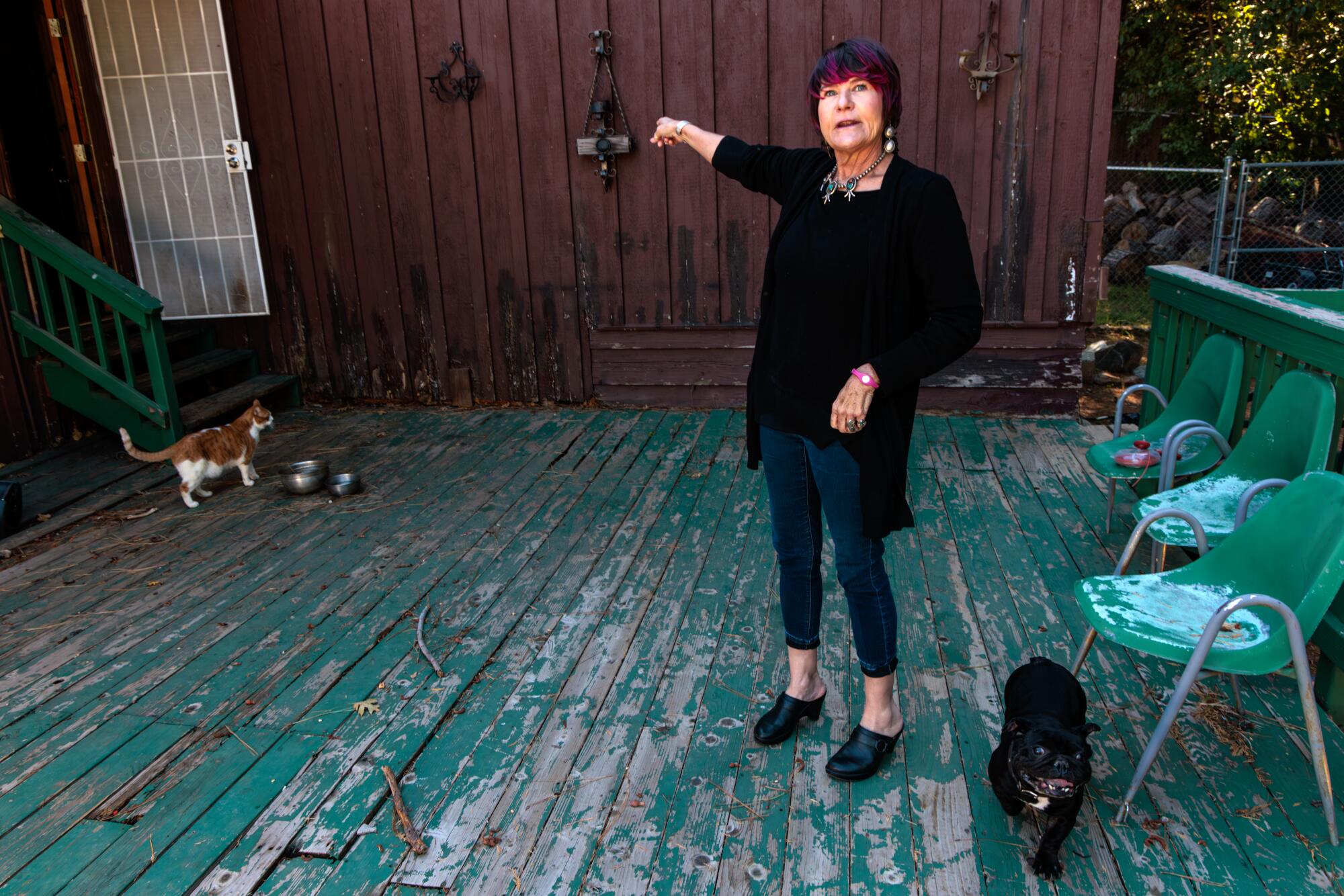
At Mountains Community Hospital in Lake Arrowhead, staff members are hoping they never have to relive the nightmare from last winter’s blizzard.
Julie Davis, the director of acute care nursing, said she couldn’t leave the hospital — and neither could patients, even after being discharged. Paramedics could transport patients by Snowcat up to the hospital doors, but without the roads cleared, no one could leave.
Hospital staff slept on cots in offices, with 10 nurses rotating through shifts, while other staff maintained cleaning and food services, said Davis, who couldn’t get home to her 5-year-old son and husband for six days.
It took twice that long for snowplows to clear the side roads leading to the hospital, Davis said.
Looking ahead to this winter, hospital staff have a plan. They will prepare to have more fuel for snow removal equipment in the event of another emergency, add cots and pillows in case they need to stay overnight and have a better line of communication with county officials, Davis said.
“I know everybody has a little PTSD from the last storm. But I know that the community is going to do better this year because we’ve already been planning for the entire year,” she said.
But repairs, lost wages and insufficient short-term housing options are keeping some people in the red, said Rhea-Frances Tetley, 72, a longtime Crestline resident.
“On the outside, the town looks like it’s recovering. But all the people I talk to are having problems.”
